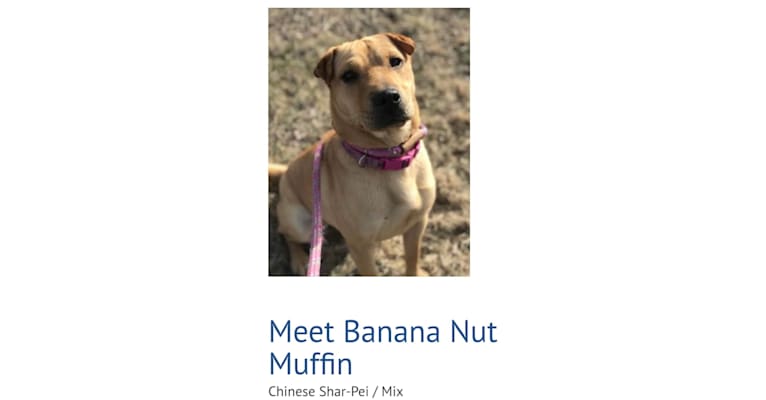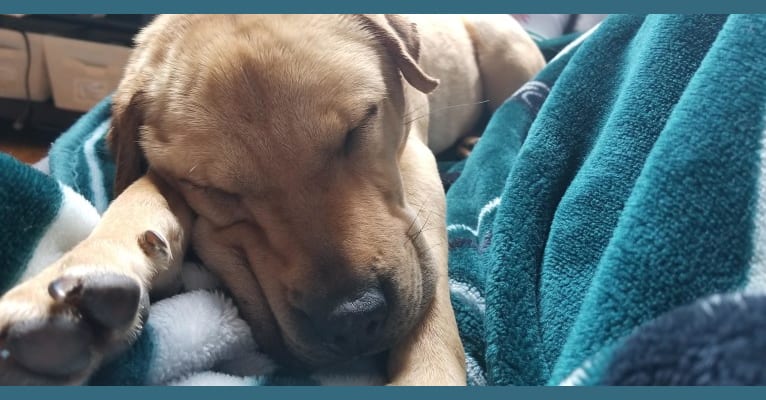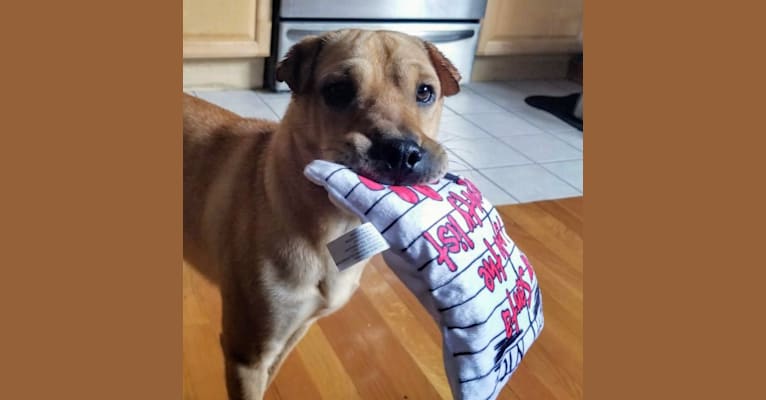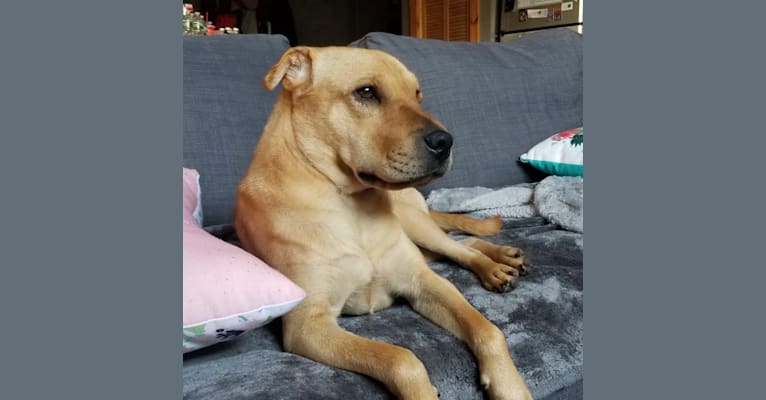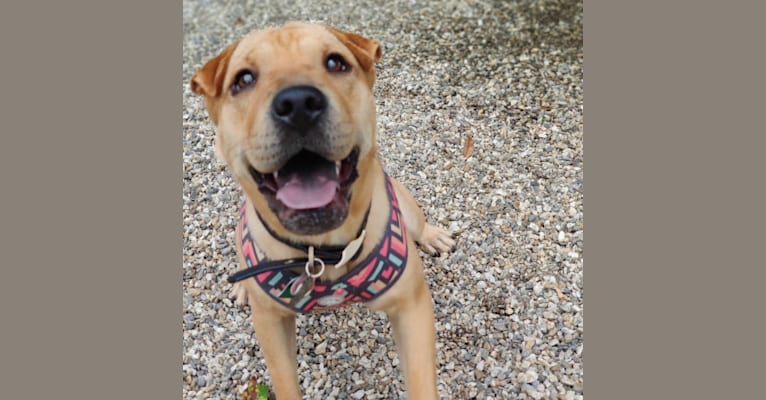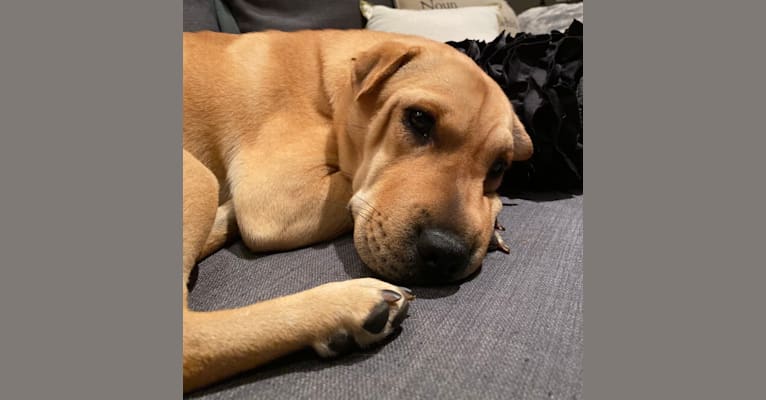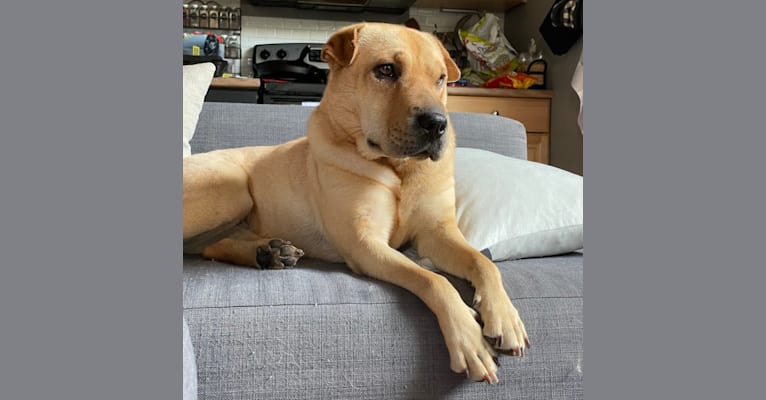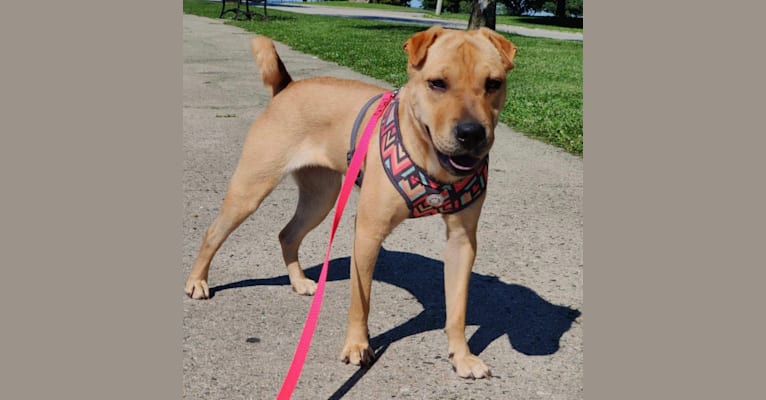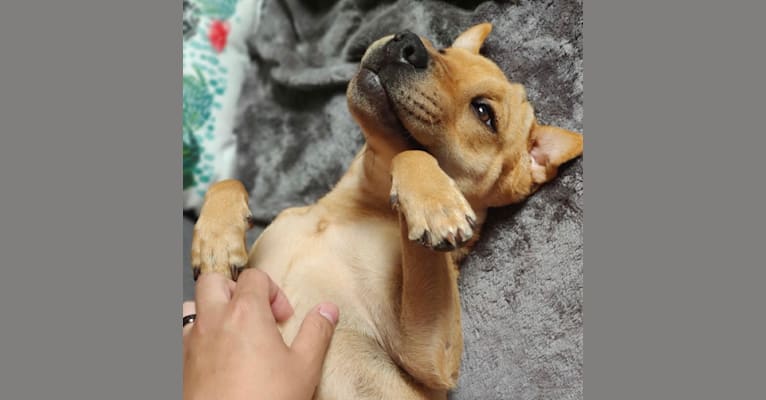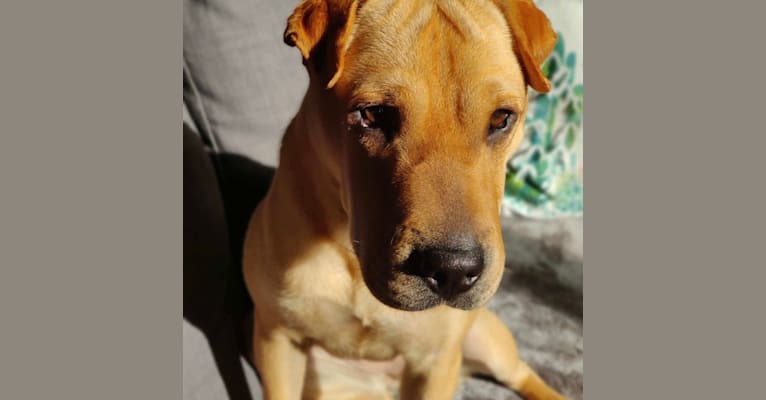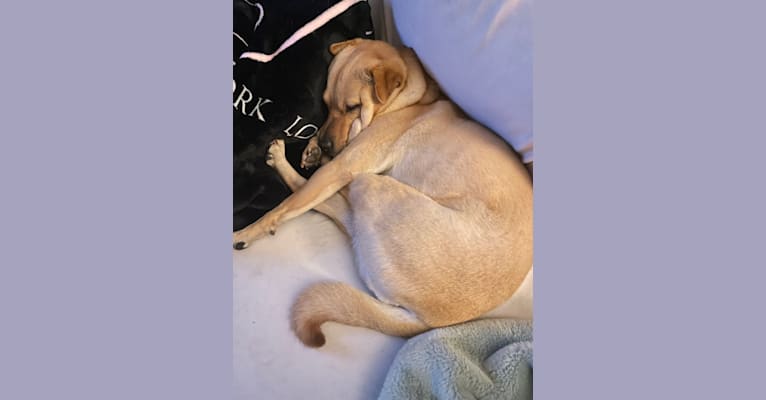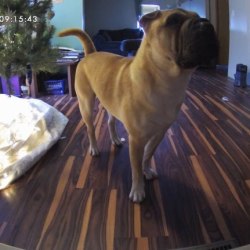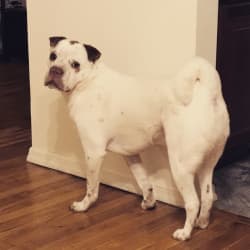“Hi, I’m Luna! It’d be a toughie to find a pup sweeter than me. I’m so sweet, in fact, that was found munching on some tasty treats from the bin at a Dunkin Donuts! Even though I do miss the munchkins, I’m happy that I was found and brought to the CT Humane Society. They put my picture online and two days later I had a family and lots of new toys! I love to play, make new friends, snuggle with my family, and run around the dog park as fast as I can! Check out my friends: https://cthumane.org/”
Current Location
Bridgeport, Connecticut, USA
From
Connecticut Humane Society, Russell Road, Newington, CT, USA
This dog has been viewed and been given 23 wags
Genetic Breed Result
Luna
Mixed Ancestry
50.0% Chinese Shar-Pei
26.6% Pug
23.4% Russell-type Terrier
Chinese Shar-Pei
Few dog breeds are more recognizable than the wrinkly Chinese Shar-Pei. This Chinese breed is often compared to a hippopotamus due to its thick muzzle. They also have a characteristic rough, bristly coat, which is how the breed got its name (“Shar-Pei” means “sand skin”). Despite their goofy appearance, Shar-Peis are serious, independent dogs who will loyally protect their owners.
Learn More
Pug
The Pug is a breed of dog with a wrinkly, short-muzzled face and curled tail. Pugs are known for being sociable and gentle companion dogs.
Learn More
Russell-type Terrier
These small, energetic terriers, developed in 19th century England for hunting small game, are now some of the best agility dogs around.
Learn More
Start a conversation! Message this dog’s humans.
Genetic stats
Dogs Like Luna

Discover dogs who share a similar breed mix to Luna. A higher score means the two dogs have more of their breed mix in common. A score of 100% means they share the exact same breed mix!
Click or tap on a pic to learn more about each dog and see an in-depth comparison of their DNA, breeds, and more.

